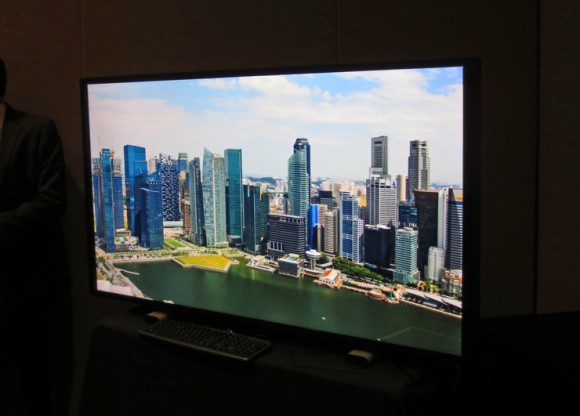
Because 1080 isn’t a big enough number, Stream TV Networks wants to go 2160. Ultra-D 2160p, that is. The proposed new format is higher resolution than HD, but also provides a 3D video effect sans the glasses. According to Stream TV, the technology uses a multi-layer optical system (Um?), and is based on proprietary hardware, software and middleware. Up close, the effect is a bit like staring at one of those Magic Eye pictures from the 1990s, but get about six feet back from the flat-screen display, and the images are gorgeous.
Stream TV says this is the first 3D technology you can watch from any angle,and it’s partnering with several manufacturers (including Pegatron and HiSense) to bring new Ultra-D chips to TVs, laptops and mobile devices. The technology reportedly requires about the same bandwidth as a 1080p video stream, and Stream TV can convert 2D feeds to this new type of 3D video using either a client device in the home – the SeeCube 4K converter box – or a network device called the SeeCube server, which is due out shortly.
In a CES demo this morning, Stream TV showed canned footage with video of Olympic athletes, a city skyline, a tiger in the wild, and more. With the Ultra-D tech, you can control the level of 3D effect you want, causing images to pop more or less depending on your preference. And while still images don’t do justice to any 3D display, I took several photos that at least give a sense of the crispness of the video, and how primary objects are better articulated against their backgrounds.
Oddly, although this morning’s demo was run on a Sharp flat-screen TV, the executive I spoke to stated twice that the technology isn’t the same as the 3D wizardry Sharp showed in its press conference earlier. I only saw the Sharp demo from a distance, but maybe this means we’re at the start of a new trend in 3D. 3D that’s not quite 3D, but is a lot easier to manage without the silly glasses.